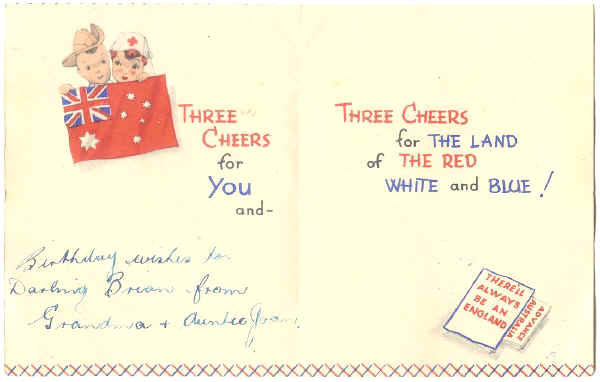 |
| Category: Flags |

|
|
|
|
|
|
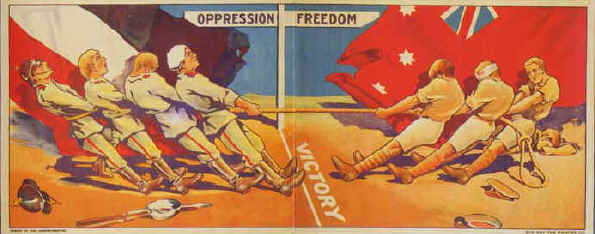
|
| This poster, circa 1916,
clearly shows that the Red Ensign was used extensively in semi-official
advertising. |
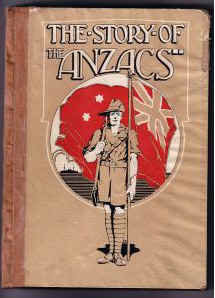 |
 |
This Digger is clearly holding an
Australian Red Ensign. |
| The Red Ensign
was chosen as the cover of this 1917 book |
Badges like this were sold in South
Australia (and elsewhere) to raise funds for the support and comfort of
wounded ANZACs of WW1. |
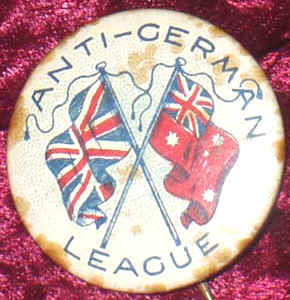 |
Anti-German
League pin-back badge circa 1915. |
|

|
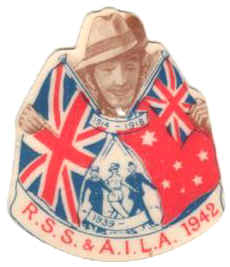
|
|
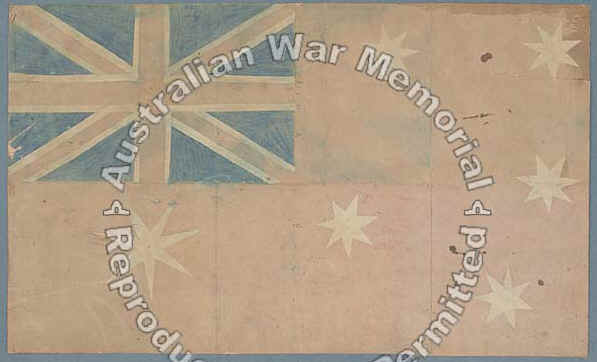
Cardboard
Australian flag improvised for the visit of Prime Minister W M Hughes to
France : 7 Infantry Brigade, AIF
Summary: Made by the staff of 7
Infantry Brigade Headquarters on the occasion of Prime Minister W M
Hughes' visit Australian troops in France in 1918. |
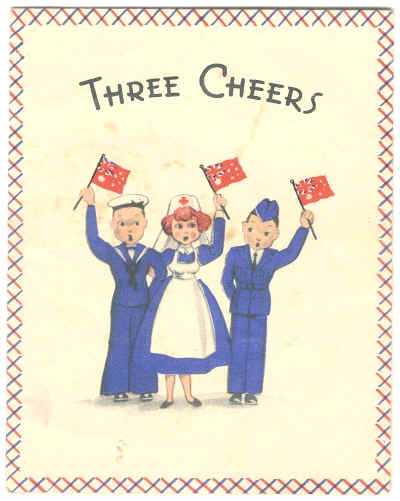 |
- A WW2 birthday card showing a
sailor, a nurse, an airman and (on the inside) a Digger and another
nurse all showing the Red Ensign.
- The twin quotations are
- "There will always be an
England" &
- "Advance
Australia".
|
 |
 |
| This is the
old Queensland Red Ensign |
The British
Red Ensign |
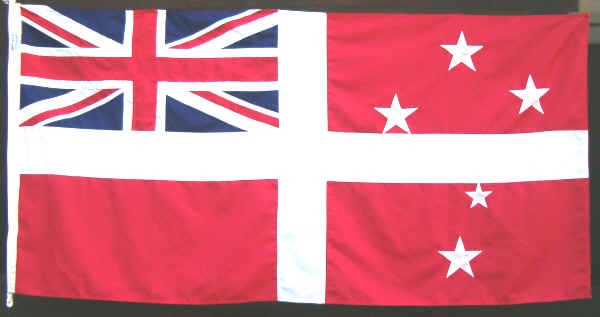 |
| This
is supposedly a Tasmanian Red Ensign circa 1875. My only concern is that
the image was provided by a Nigel Morris who has publicly called me a
"dog" for even talking about the Red Ensign so I am not sure
of the validity of the information provided. |
|
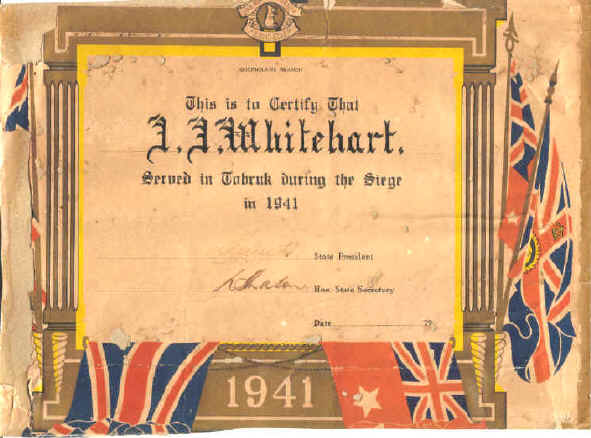
|
| A
relative of mine served with the 2nd Ninth Battalion 2nd AIF at the Siege
of Tobruk. Even a quick look will show that the Australian Red Ensign has a
place of pride on this document. The Blue Ensign (mostly lost to
silverfish) is also there on the left hand side facing. |
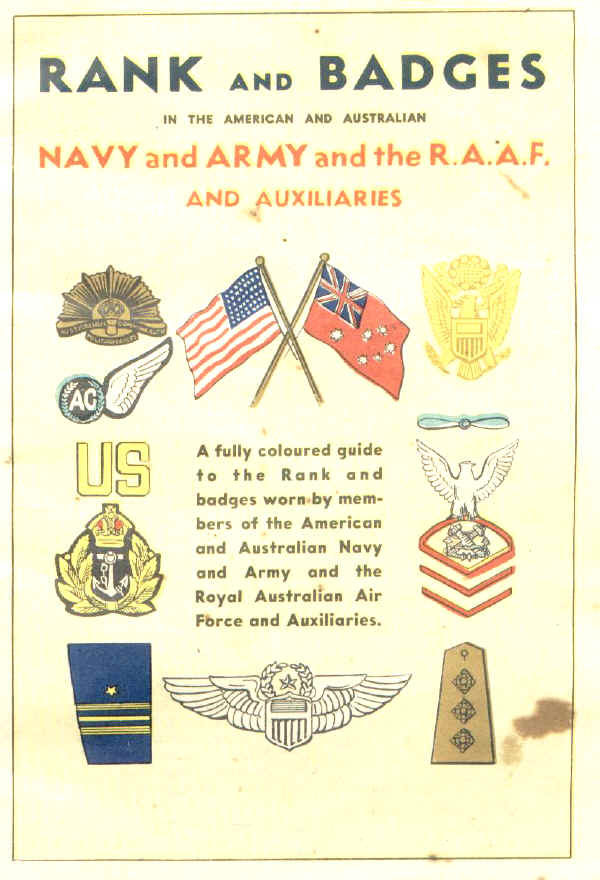 |
| The Red Ensign makes
another showing on this booklet produced in WW2 to explain the various
insignia used in Australia by various bodies including the USN, US Army
& USAAF |
 |
 |
| Printed cotton
patriotic cloth. The cloth is surrounded by a pale blue border and
headed by the words 'A SOUVENIR OF THE GREAT WAR'. To the left of this
heading is an airship, to the right is a biplane. In the centre of the
heading is a portrait of Lord Kitchener. On either side and slightly
lower are portraits of General French and General Joffre. Below Lord
Kitchener is a portrait of Grand Duke Nicholas. A calvary charge is
depicted to to the left of these portraits while to the right an
artillery attack is printed. In each corner are larger portraits of King
George V, the Czar of Russia, the King of Belguim, with a burning town
behind him, and President Poincare. Printed clockwise around the cloth
are portraits of the King of Servia with a flag behind it, General Botha
with a mounted soldier and red ensign on either side, |
| General
Smith Dorrien, General D Henderson with an aeroplane behind it, General
Allenby, Colonel Sam Hughes with two infantry soldiers and a red ensign
on either side, General Leman, Lord Landsdown, Rear Admiral Beatty, Hon.
W Churchill and Lord Fisher with an anchor between them, Admiral
Jellicoe, General Douglas Haig, Sir Edward Grey and Hon.
A Bonar Law with a ship and the flags of Australia and New Zealand
behind them, (note the Australian flag is depicted as an Australian Red
Ensign) Hon. H H Asquith, Lord
Roberts with two soldiers on either side, Maharajah of Behar, Viceroy of
India with a red ensign and an elephant on either side and Mikado in
front of a Japanese flag. In the centre of the cloth is a piece of paper
with signatures and red seals printed in front of the flags of the
United Kingdom, Belgium, France and possibly Imperial Russia. Behind the
flags is a sun with the words 'LIBERTY & PEACE' written near the
top. At the base of the paper is a lion and a scroll with the words 'OUR
WORD IS OUR BOND'. To the left of the flags are French soldiers manning
a field gun. To the right is a mounted Indian soldier. Below the centre
image is depicted a fleet of warships with aeroplanes flying above them. |
|
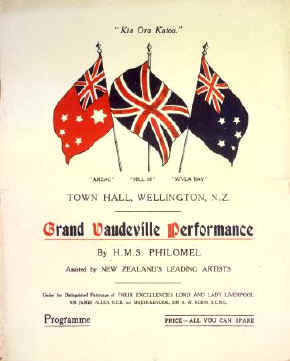
|
 |
| A
NZ organised Anzac Show uses the Australian Red Ensign on the programme. |
This
shows the use of the Red Ensign on a Memorial Thankyou card for a fallen
soldier |
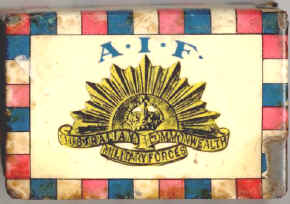 |
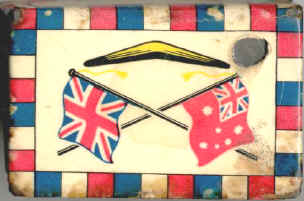 |
| This
AIF "match-safe" or match box protector from WW1 clearly shows
the use of the Red Ensign was common, far more common than the use of
the Blue Ensign. |
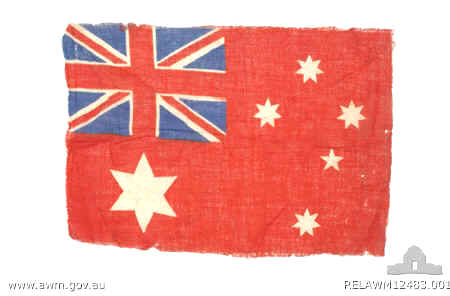 |
Acquired in Glasgow on 11
November 1918, the day the Armistice was signed, by 1378 Corporal Arthur
William Skyring, of 4 Australian Broad Gauge Railway Operating Company,
AIF.
It was hard to obtain Australian flags in Britain during the First
World War. |
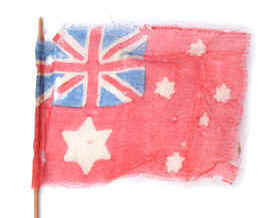 |
Acquired in London on 12
November 1918, the day after the Armistice was signed, by 1378 Corporal
Arthur William Skyring, of 4 Australian Broad Gauge Railway Operating
Company, AIF.
It was hard to obtain Australian
flags in Britain during the First World War and this very small example
was all that Skyring could find in London. |
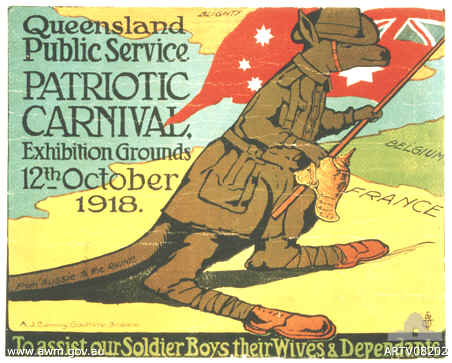 |
- Queensland Public Service Patriotic
Carnival at the Exhibition Grounds, 12 October 1918.
- "To assist our Soldier Boys,
their Wives & Dependants".
|
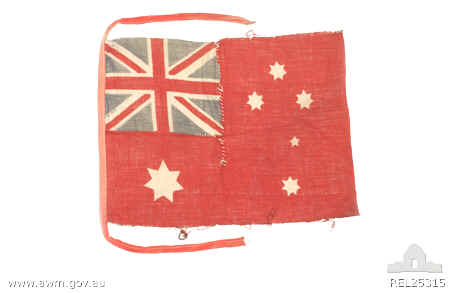 |
Associated with 421324
Flying Officer Morris Dolf Freudenstein RAAF, who served with 640
Squadron RAF (Wellington Bombers) during World War Two.
It is claimed he
carried the ensign whilst on operations. |
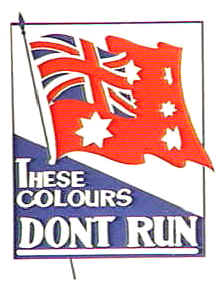
"These Colours
Don't Run"
Details 
Poster by Department
of Munitions, Melbourne 1942.
Screen-printed in
black, blue and
red on white. |
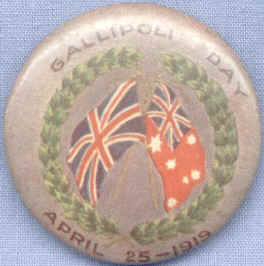
|
|
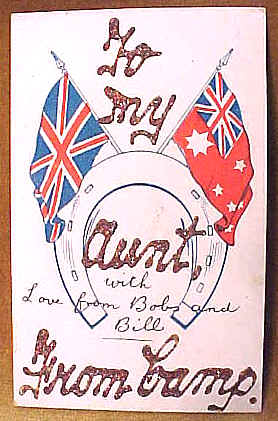
|
Unusual WW1 Postcard with
the embossed words on front "To My Aunt From Camp", followed
by the written words "with love from Bob and Bill".
The back reads: "Dear Auntie
& Uncle Just a few lines to let you know that I am still alive.
Cousin Jack is looking after us very well. We stayed out at his place
last Saturday night and enjoyed ourselves. Well this is all I have to
say. So Goodnight. I remain your loving nephew. Bill & Bob".
Note.
The artist must not have known the
superstition about not having a horse-shoe facing down so that all the
"good-luck" runs out of it. |
|























